Top 11 Most Beautiful Historical Sites in Ireland
From historic marshlands to tombs with passages older than Stonehenge and the famous ancient stone laboratories of Star Wars at 712 feet above sea level, there ... read more...is always history in Ireland incredible. Toplist's article will introduce you to the most beautiful historical sites in Ireland.
-
The Rock of Cashel, perched high on a solitary lump of gray limestone, was once a ceremonial center and home to the Eóganacht, Munster's monarchs, and it remains a significant symbol and one of the Southeast's top attractions. Cormac's Chapel, an atmospheric Romanesque church erected in 1134 with unusual features like blind arcading and rounded doors, and the Hall of the Vicars Choral, a 15th-century Round Tower that housed the choir, are among the highlights of this imposing outcrop. The complex's greatest structure, the Gothic cathedral, dates from roughly the 13th century and features medieval sculptures, carved heads on capitals, burial slabs, and pointed arches.
In 1101, the site was granted to the church, and Cashel quickly emerged as one of the most important centers of ecclesiastical power in the country. The surviving buildings are remarkable. The Cormac Chapel, for example, contains the only surviving Romanesque frescoes in Ireland. Rock of Cashel is one of the most beautiful historical sites in Ireland and one of the most spectacular and deservedly most visited tourist attractions.
Location: County Tipperary
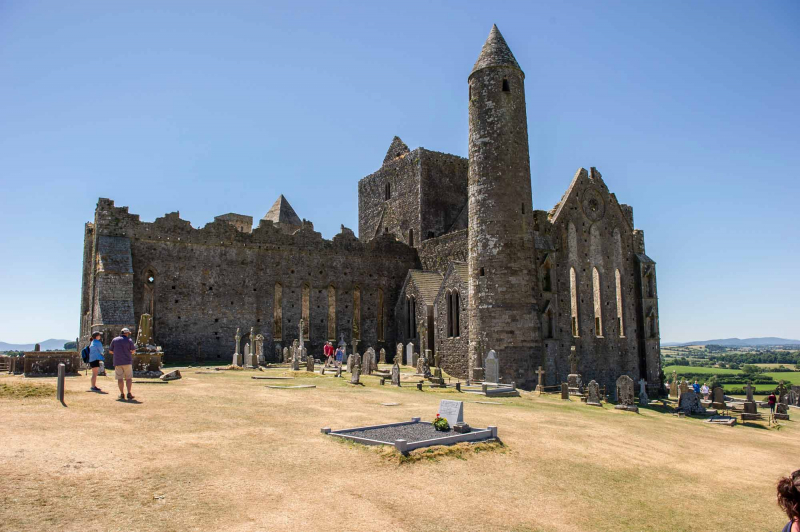
Photo: heritageireland.ie 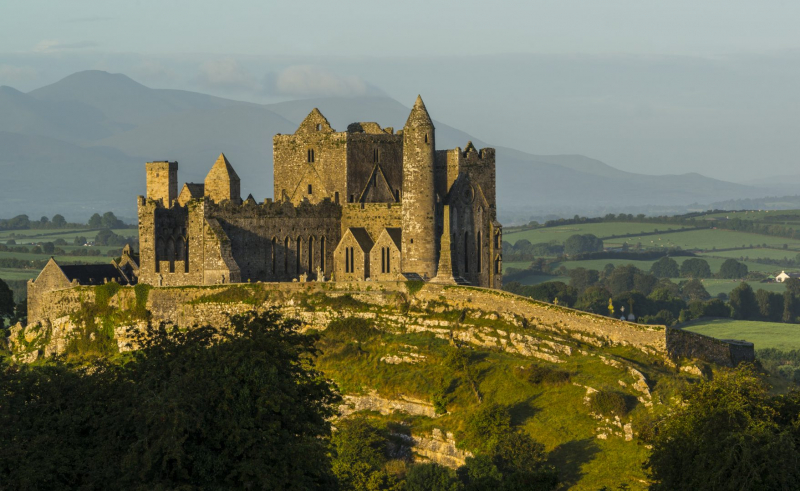
Photo: https://tipperary.com/ -
This trail, dubbed Kilkenny Medieval Mile by tourism experts, goes through Kilkenny's city center, connecting a 13th-century cathedral with a towering, 800-year-old, creeper-clad castle, as well as a plethora of other historic structures. This time warp maze of cobblestone streets and alluring lanes (known as "slips") is steeped in history, and strolling through them is a shockingly sensual experience.
The Anglo-Norman fortress overlooking the River Nore, which was home to the powerful Butler family for six centuries, is one of the route's architectural highlights. The 6th Marquess of Ormonde handed it to the city for £50 in 1967, and it's a great draw with its picture gallery wing, which has a hammer-beam roof and is lined with family pictures. The route passes by some of Ireland's most beautiful structures, including the Tudor-era merchant's Rothe House, the Tholsel (or town hall), and St. Canice's Cathedral, which boasts a climbable Round Tower. The indigenous, black, polished limestone known as Kilkenny marble gleams on the buildings, earning the city the nickname Marble City.
Location: County Kilkenny
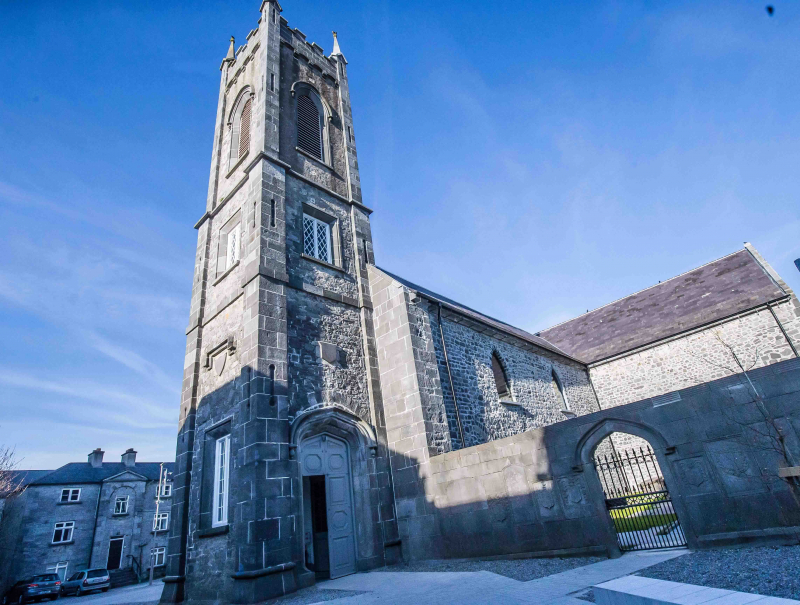
Photo: https://www.marconheritage.com/ 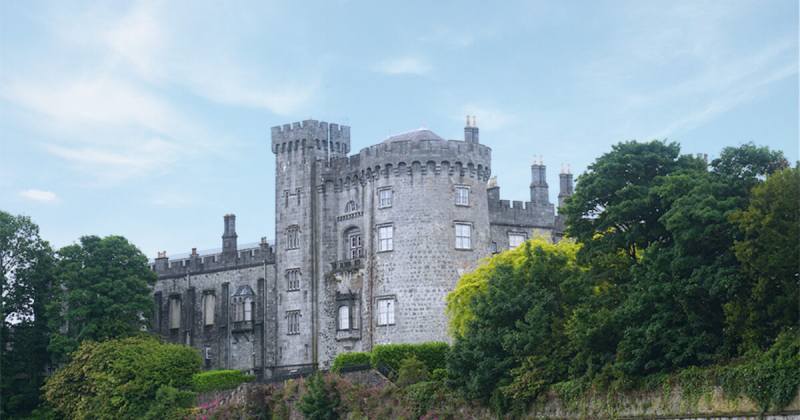
Photo: https://www.butlergallery.ie/ -
Hillsborough Castle, which dates from the 1770s, is Ireland's only royal residence, and it is still used by the British royal family for state trips to Northern Ireland. This Georgian gem is located 19 kilometers (12 miles) south of Belfast and was given new life in 2018 as part of a £16 million refurbishment. Benjamin Franklin remained here for five days and is supposed to have directly contributed to the American Revolutionary War during his stay.
The Throne Room, the grandest in the house, is dressed in green silk-damask fabric and used for investitures and citizenship ceremonies, as well as an annual concert, was given by the Prince of Wales. A guided tour takes in the history of the refurbished State Rooms and includes the Throne Room, the grandest in the house, dressed in green silk-damask fabric and used for investitures and citizenship ceremonies, as well as an annual concert given by the Prince of Wales. The Queen met Irish President Mary McAleese in the Red Room in 2005. The salon, which was decorated with exceptional artwork by Anthony Van Dyck, Sir Joshua Reynolds, and William Hogarth, matched the grandeur of the event, as it was the first time the two heads of state had met in Ireland.
The castle gardens span 100 acres and feature a walled garden that dates back to the 18th century and was once used to grow fruit and vegetables for the castle. The overgrown and difficult-to-access Lost Garden has been rediscovered and restored, with ferny walks, bridges, and trails open to the public.
Location: County Down
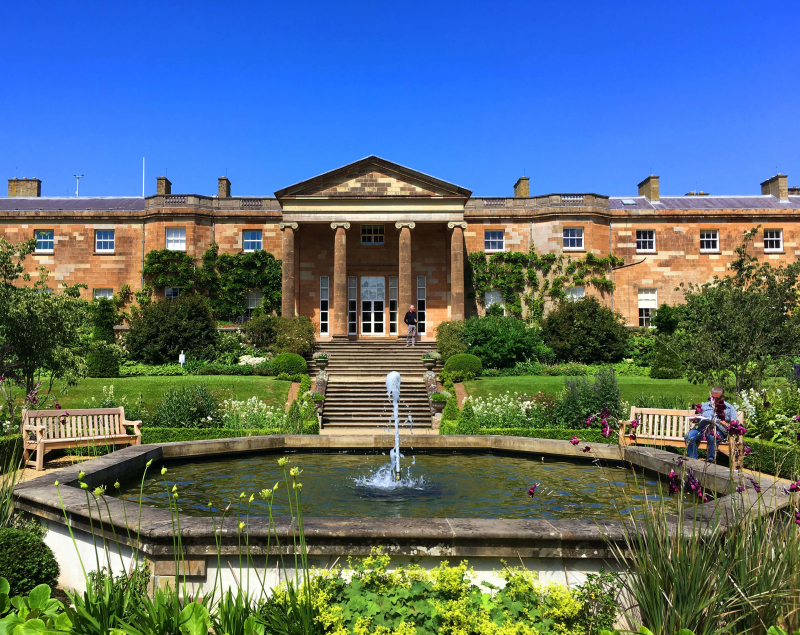
Photo: https://headbox-media.imgix.ne 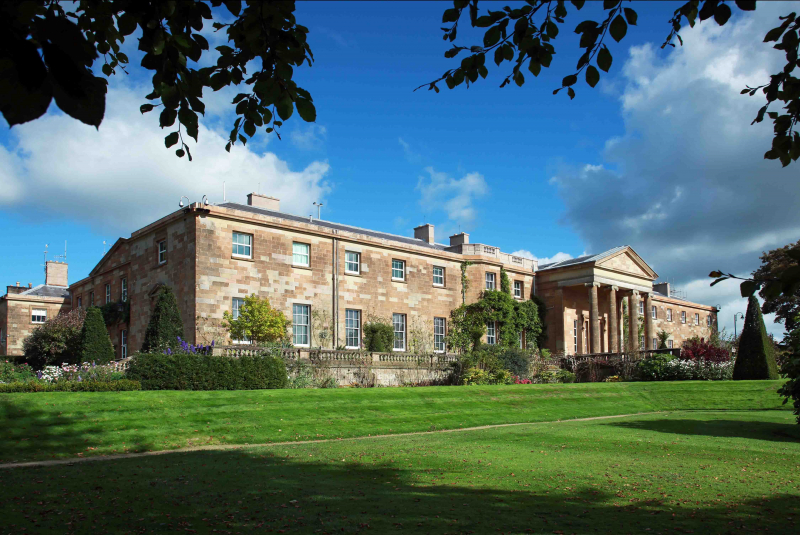
Photo: https://www.marconheritage.com/ -
Céide Fields (pronounced Kay-jeh) is a historical bogland and unique ecosystem located in a remote coastal part of north Mayo on the Wild Atlantic Way. Barley was historically produced in its cultivation ridges. The fields are one of the world's largest Stone Age monuments, representing a complete Neolithic village dating back 5,000 years. Thousands of people used to dwell on these bogs and hills.
Heathers, pink-flowering lousewort, milkwort and butterwort, mosses, sedges, and lichen can all be found during a walk through them. The location is the largest blanket bog valley in Western Europe, stretching 30 kilometers (1812 miles) west. An ancient Scots pine tree, reputedly 4,300 years old and from a local bog, is the headline attraction in the foyer of the visitor center, an award-winning, glass-topped, pyramidal edifice cut into the sloping slope. The Céide Fields are the fourth most beautiful historical site in Ireland. Come to Seychelles to admire the beauty of Céide Fields.
Location: County May
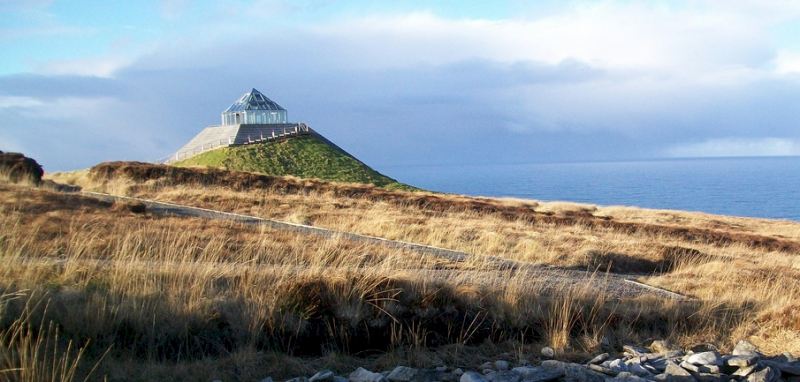
Photo: https://www.dochara.com/ 
Photo: https://www.irelandnorthwest.ie/ -
Dun Aengus is a stunning semicircular fort set against sheer, 300-foot-high cliffs on the edge of the Western world, far from the most fascinating ancient site on the three sea-battered Aran Islands. The ruins of this fort, located on the northern coast of Inishmore's largest island, consist of three drystone ramparts around an interior enclosure, the purpose of which is unknown. Bronze Age beads, tools, and rings were discovered on the site and are now housed in the National Museum in Dublin; researchers believe they may have had ceremonial importance, but the fort's mystique is an important part of its attractiveness.
Visitors flock to the Aran Islands not only for the history but also for the breathtaking vistas that run uninterrupted to Mt. Brandon on Kerry's Dingle Peninsula on a clear day. You might even see the island of Hy Brasil, a renowned mirage after which the South American country is reportedly called if you look closely to the west. It is shrouded in legend, and islanders believed it appeared once every seven years. It was even depicted on Atlantic Ocean marine maps until the mid-nineteenth century.
Location: Inishmore, Aran Islands, County Galway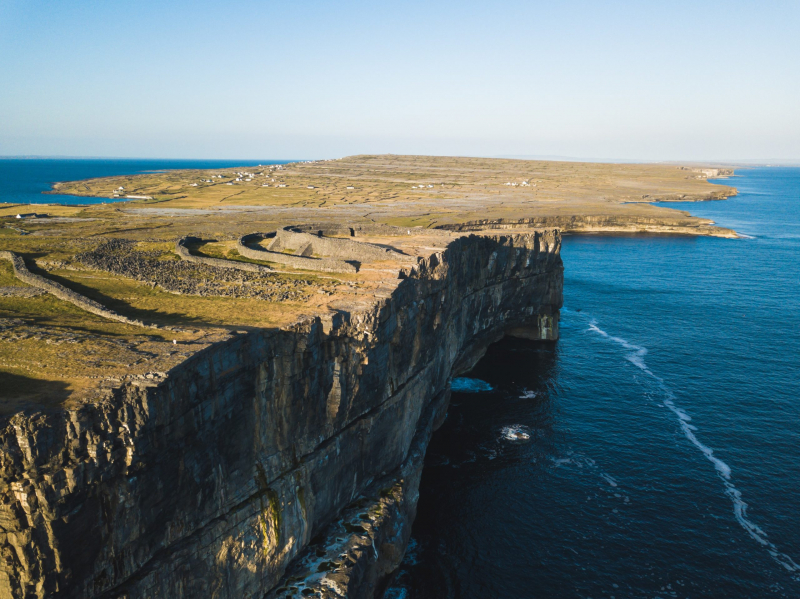
Photo: https://www.guide-ireland.com/ 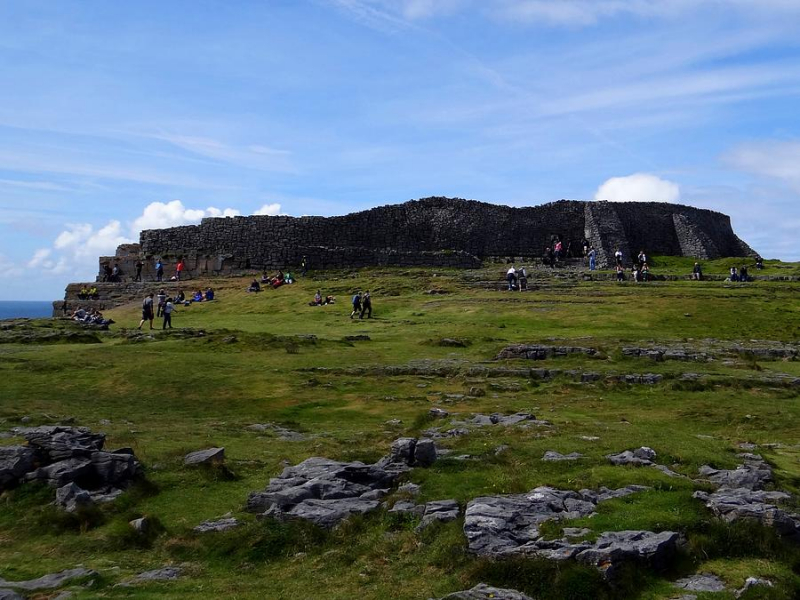
Photo: https://images.fineartamerica.com/ -
Two barren islands of old red sandstone lay 13 kilometers (8 miles) off the southwest Irish coast, beckoning you to come to see them (but only in calm seas). The boatman drops you off at a tiny pier on Skellig Michael after circling the smaller island of Little Skellig to witness the awe-inspiring scene of 30,000 gannets battling for precious space on the packed ledges. Skellig, an early Christian hermitage, has been designated as a UNESCO World Heritage Site and is most known for being the home of Luke Skywalker in the Star Wars films The Force Awakens and The Last Jedi.
The boat ride to the islands is an adventure in and of itself; the finest day is when the weather is calm and the boatmen prefer to cross on "lazy" waves. The Highway to Heaven, a 20-minute zigzag journey on 650 uneven and worn flagstones, leads to the summit, which is 712 feet above sea level and has exceptionally well-preserved drystone beehive cottages and oratories. It was described by Irish playwright George Bernard Shaw as "an extraordinary, impossible, mad place...It's a part of our fantasyland." The monks departed the island in the 12th century, and it is today inhabited by hundreds of portly, sociable, bright-billed, and red-legged puffins who adore nothing more than posing for the cameras, a selfie opportunity par excellence.
Location: County Kerry
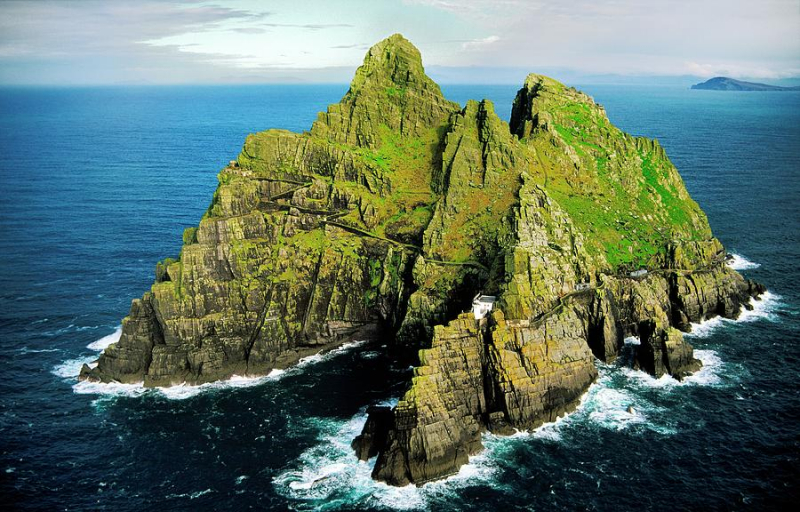
Photo: https://images.fineartamerica.com/ 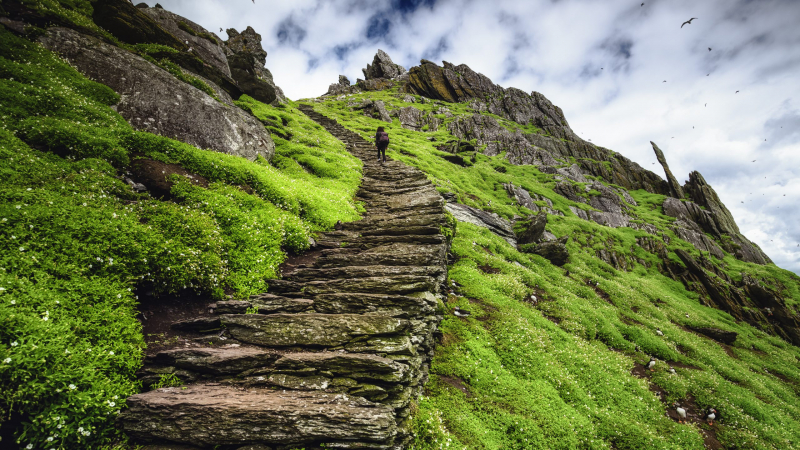
Photo: https://www.guide-ireland.com/ -
The River Shannon is surrounded by several historical landmarks. Clonmacnoise, which means "Meadow of the Sons of Nóis" in Irish, is definitely the pinnacle of any list of the band's greatest songs. This monastic structure, erected by St. Ciarán in the 6th century, is the most constantly revered of all the buildings that line the riverbank. It's a spot where land, riverscapes, and old church buildings meld into a single piece of consecrated territory with a 1,500-year history. For hundreds of years, the unbroken vista has included a network of seven stone churches, three great sculpted crosses, two Round Towers, and one cathedral.
Clonmacnoise possessed the status of a city and was a center of power and influence in the 8th and 9th centuries. It was packed with black-robed monks, clergy, scribes, artists, and students from all over Ireland and Europe. Despite the fact that it is now a popular tourist destination, the name Clonmacnoise still conjures up images of saints, scholars, and even a few squabbling scoundrels and chieftains. It is reminiscent of Ireland's golden age of learning since it is a place where you can absorb the essence of an ancient land while also connecting with nature. Clonmacnoise is the seventh most beautiful historical site in Ireland.
Location: County Offaly
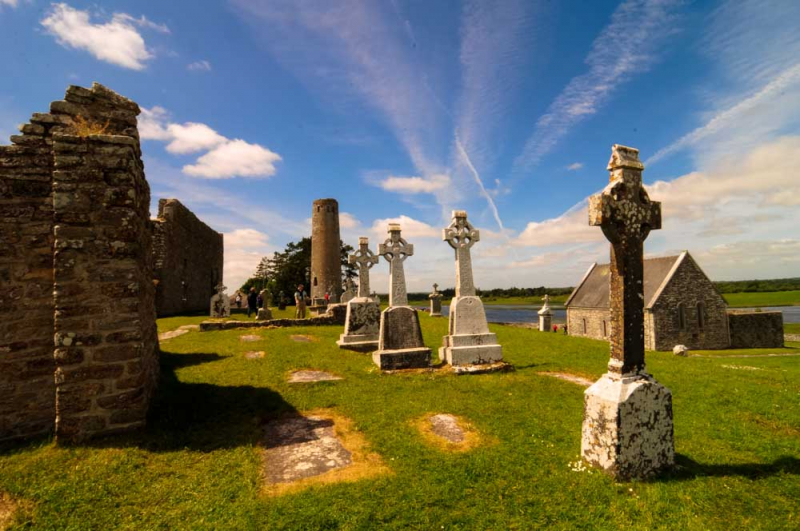
Photo: https://www.athlone.ie/ 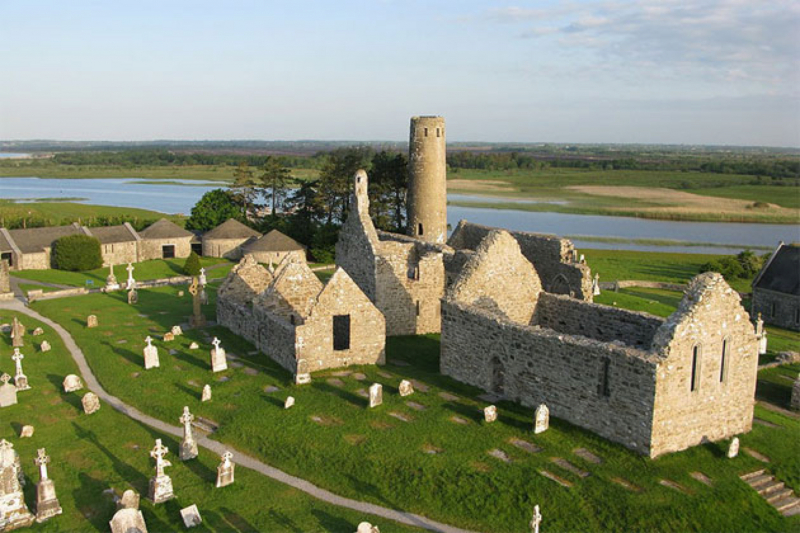
Photo: https://stairnaheireann.net/ -
The Newgrange passage grave, also known as Br na Bóinne, or "palace or farmstead of the Boyne," is one of Ireland's most famous prehistoric sites, situated on a commanding ridge near a loop of the River Boyne. Newgrange, a UNESCO World Heritage site, is a massive mound composed of alternating layers of earth and stone that dates back to around 3200 BC. It has a diameter of 295 feet and a surface area of 47,000 square meters, with a ring of 97 curbstones around its base leading to the central chamber, which is lined with 43 upright stones, some of which are etched. Its entryway, which features enigmatic lozenges, zigzags, spirals, concentric circles, and other geometric forms, is ornately ornamented and a remarkable example of megalithic art. These could have been symbolic or religious or magical, but the original meaning of the motifs remains unknown.
The winter solstice is inextricably tied to a roof box above the entrance that admits sunlight into the chamber. The entire area comes alive with vivid drumming and singing four minutes after sunrise on December 21st, generated by a heterogeneous assemblage of archaeologists, youngsters, pagans, poets, and wolfhounds. It is supposed that you can hear the Tuatha Dé Danann, the pre-Christian Irish gods who are said to have arrived on a dark cloud as divine creatures and with whom the place is linked, at this hour.
Location: Newgrange, County Meath
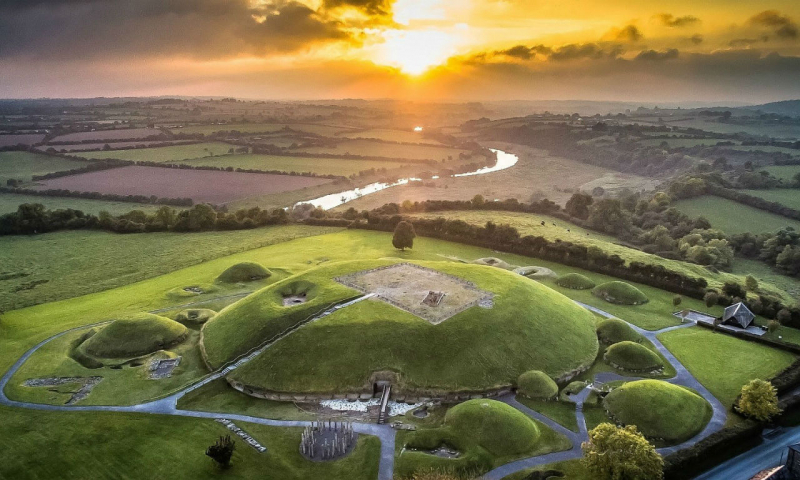
Photo: http://d5qsyj6vaeh11.cloudfront.net/ 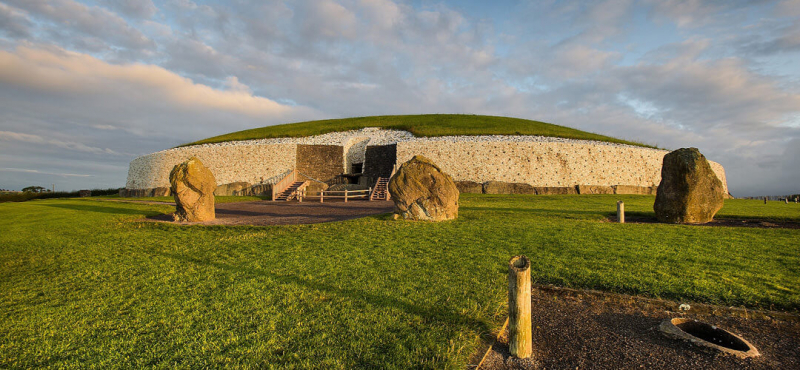
Photo: https://avea.ie/ -
Glendalough, located in the Wicklow Mountains, is a beautiful valley sculpted by Ice Age glaciers and home to some of Ireland's best-preserved monastic buildings. St. Kevin established his 6th-century village here, a pleasant refuge where he could worship. The remains include a 108-foot Round Tower and spiritual structures that were active for centuries. The Vikings raided the settlement at least four times between the eighth and eleventh centuries, followed by the English in the fourteenth century before it was dissolved during the Reformation.
The primary attractions are located on the eastern side of two gorgeous lakes: the Lower Lake and the Upper Lake, which has wooded cliffs and a well-known waterfall. A double stone gateway leads to the roofless but beautiful Cathedral of St. Peter and St. Paul, which dates from the 9th century and is located on the Lower Lake. St. Kevin's Cross, a granite boulder carved with a Celtic cross, stands outside as one of the best extant relics. St. Kevin's Church, sometimes known as St. Kevin's Kitchen because people thought the bell tower was a kitchen chimney, but no food was ever cooked there, is a short walk downhill. On this list, Glendalough is the tenth most beautiful historical site in Ireland.
Location: County Wicklow
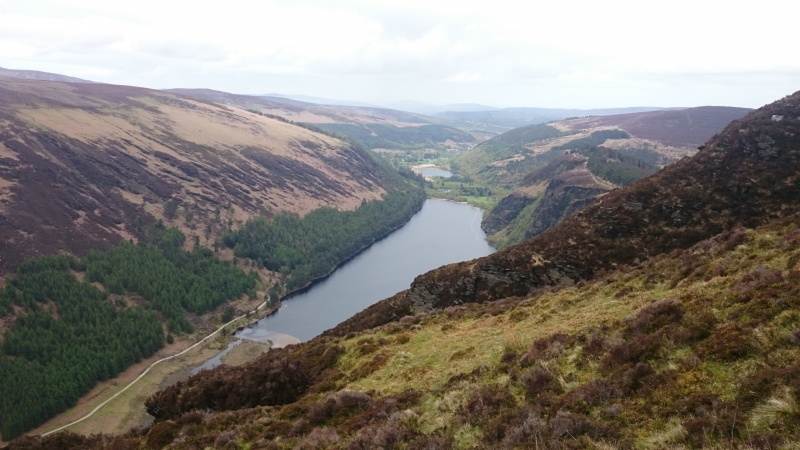
Photo: http://www.swanireland.ie/ 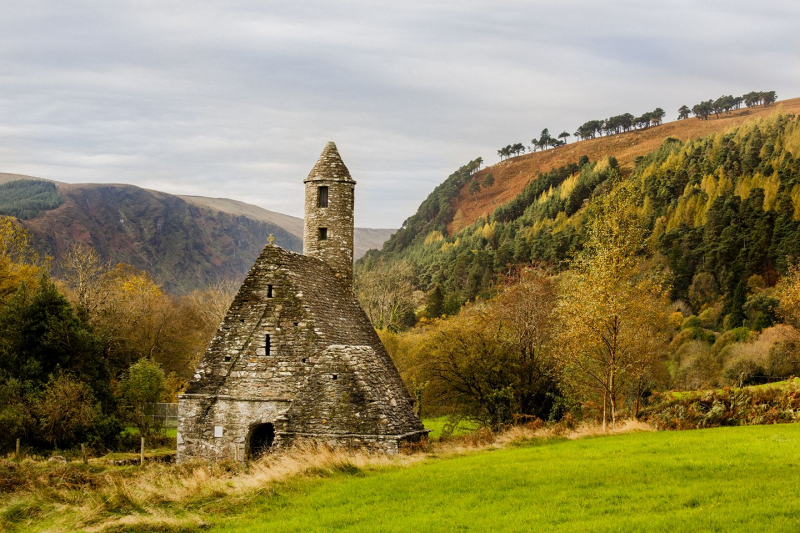
Photo: http://www.kilkennytaxitours.com/ -
Kilmainham Prison, where the leaders of the 1916 Easter Rising and other Irish rebels were murdered by the British, conjures a horrific moment in history with its levels of cells, overhead catwalks, and bleak passageways. The prison, which is now a government-run museum, is a symbolic site associated with the war for independence, Irish political martyrdom, and British oppression.
Its history dates back to the 1790s, when Henry Joy McCracken and Robert Emmet, the leaders of the 1798 and 1803 rebellions, were imprisoned there. Thousands of ordinary men and women have been detained in jail over the years for petty misdeeds or more serious offenses such as murder.
Kilmainham was the detention center for the arrested leaders of the Easter Rising in the second decade of the twentieth century, and 14 of them were shot in the stonebreakers' yard from May 3 to 12. Their executions, more than any other event, contributed to the strong yearning for an independent Irish state free of British domination. Even after the War of Independence (1919–21), Republicans were imprisoned here. After the release of its last convict, Eamon de Valera, who would later become Ireland's Taoiseach (Prime Minister) and president, the prison closed in July 1924. Kilmainham Gaol is among the top 11 most beautiful historic sites on this list, which comes as no surprise.
Location: County Dublin
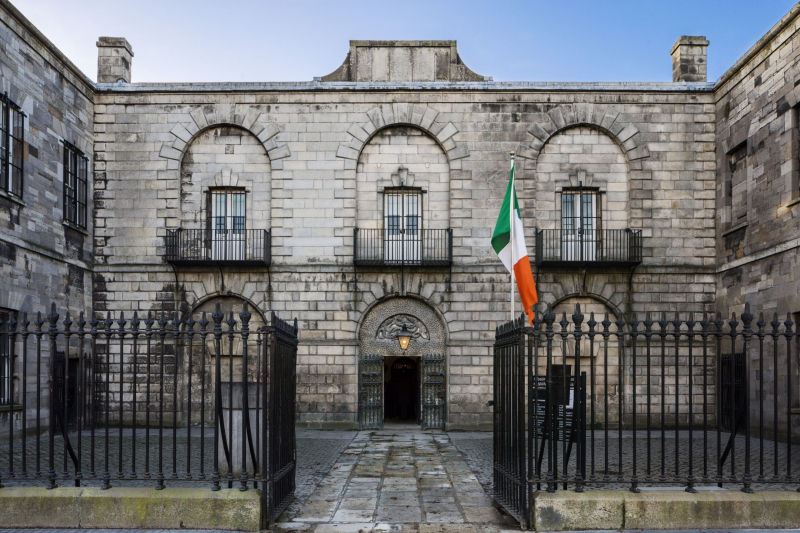
Photo: https://heritageireland.ie/ 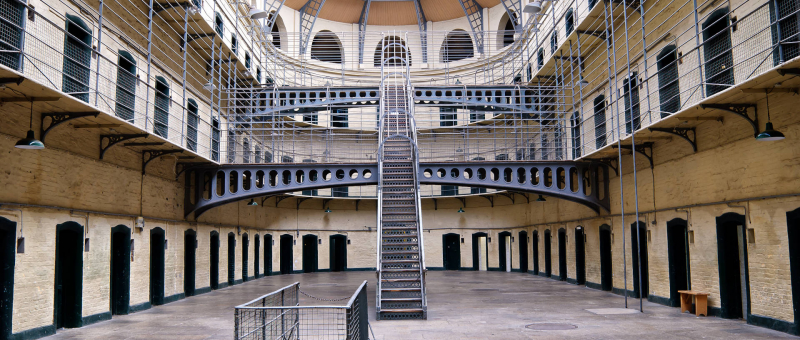
Photo: https://www.aspecthotelparkwest.com/ -
The Book of Kells, a 9th-century manuscript with delicate symbols and magnificent Celtic motifs, is often recognized as Ireland's most important cultural asset, as seen by the long lines to visit it at Trinity College. Leave the congested streets of Dublin behind and discover a tranquil environment where education and tourism coexist in a mainly harmonious, albeit crowded, mix. A short stroll across the historic cobblestone quadrangle leads to the Old Library, where a different page of the masterpiece is on exhibit each day in a glass case.
The 680-page medieval manuscript is a highly ornamented copy of the four Latin gospels donated to the institution in the 1660s. Its origins are disputed, with the most frequently accepted attribution being the Scottish island of Iona, despite the fact that it is named for a minor village in County Meath founded by monks. The book is made up of 340 vellums, or calfskin, folios penned by the scribes in an ornate style. Its ornate ornamentation combines Celtic, Germanic, Pictish, and Mediterranean elements. The Book of Kells easily outclasses other manuscripts in terms of vibrancy, intricacy, color, and scale. It incorporates some monkish aspects of humor as well as liturgical and eucharistic meanings. The Book of Kells is a medieval manuscript. The Book of Kells is the last beautiful historical site in Ireland.
Location: Trinity College, Dublin
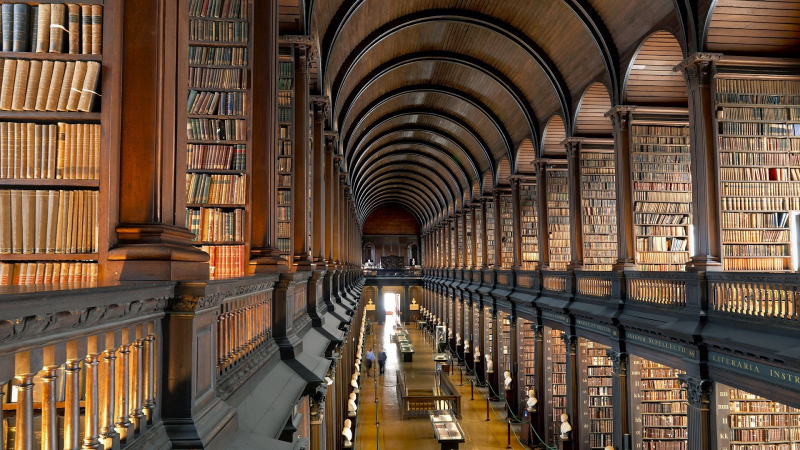
Photo: http://2.bp.blogspot.com/ 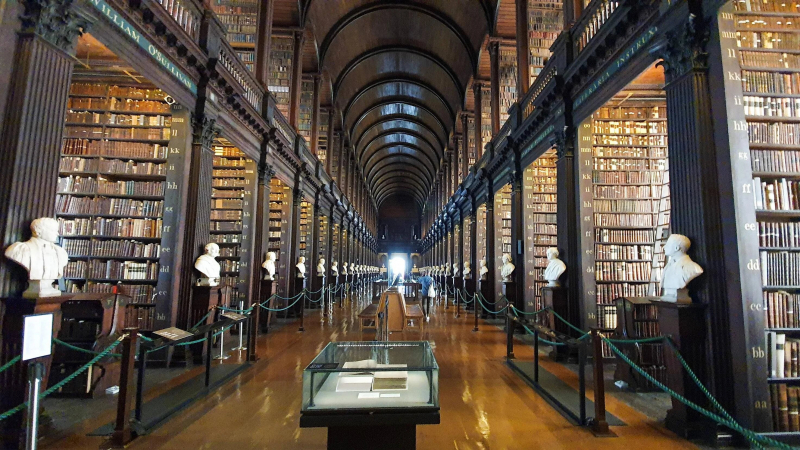
Photo: https://external-preview.redd.it/
































